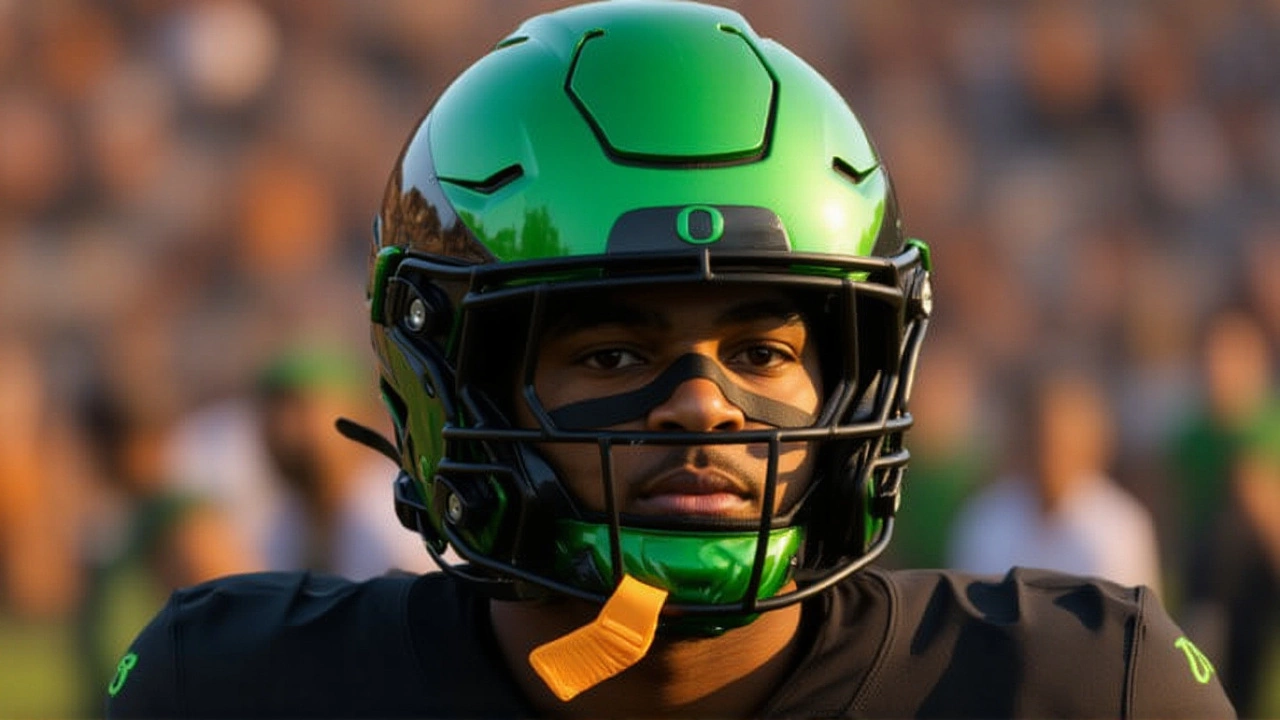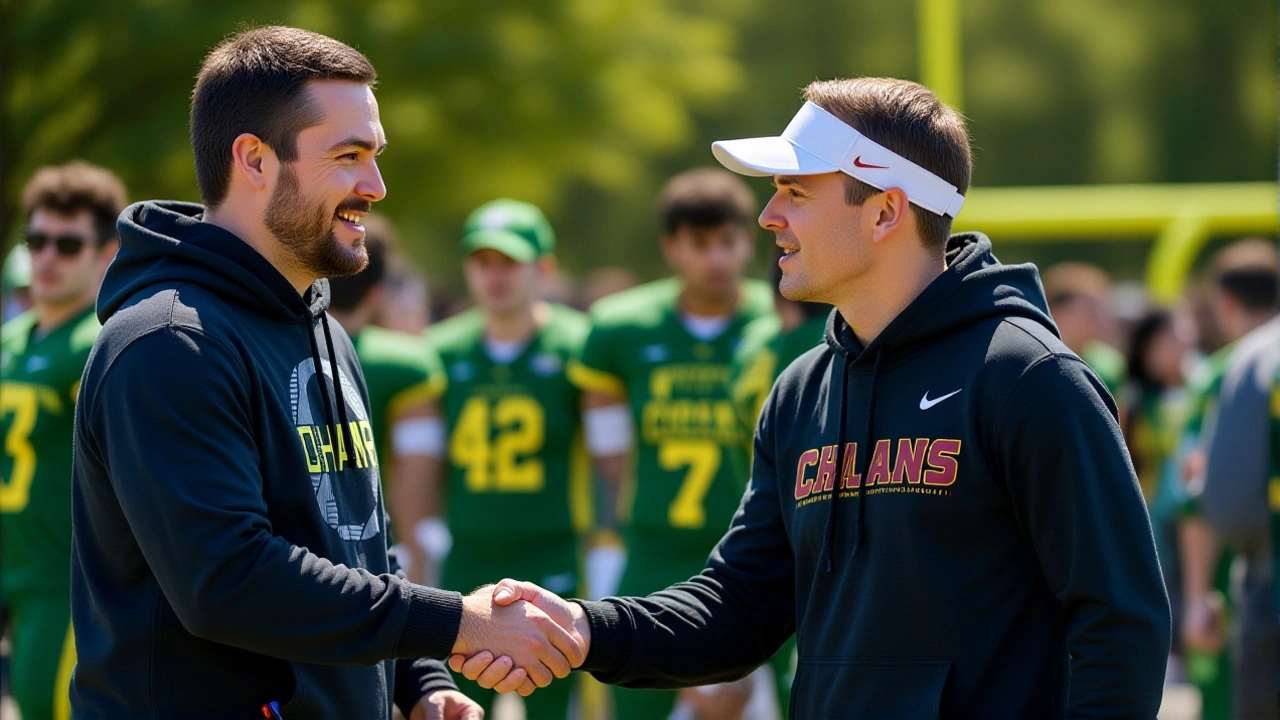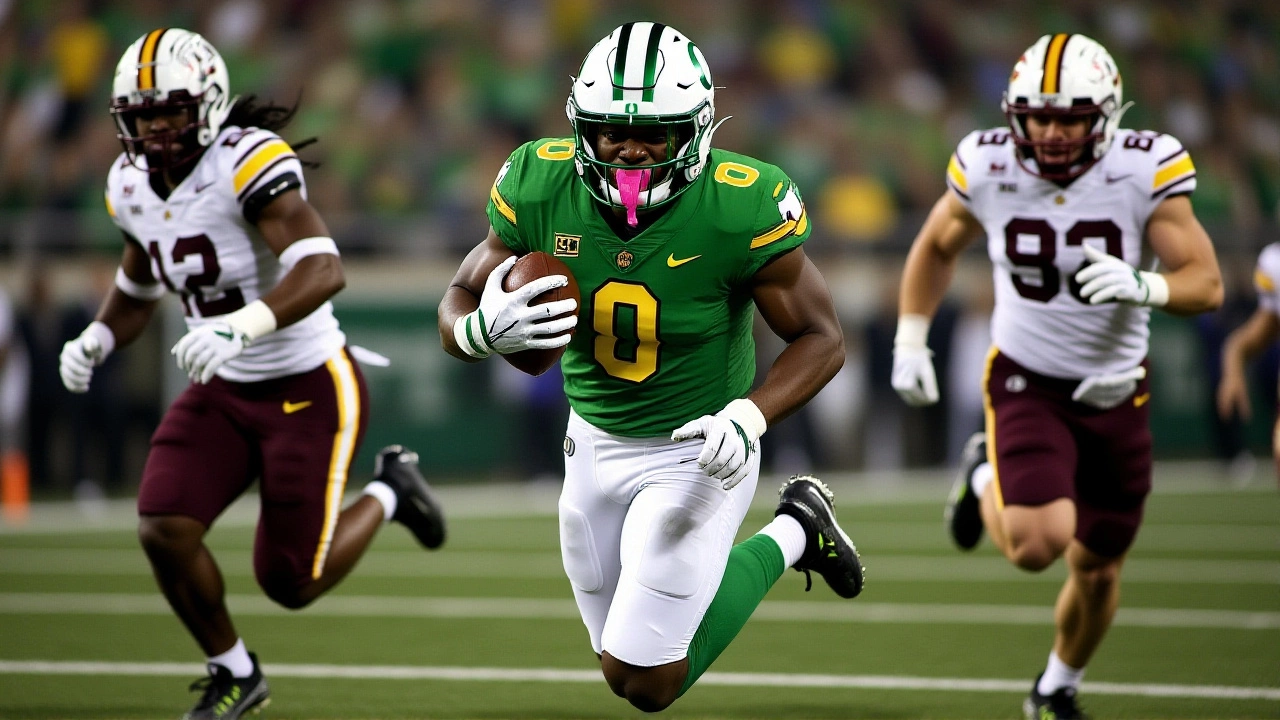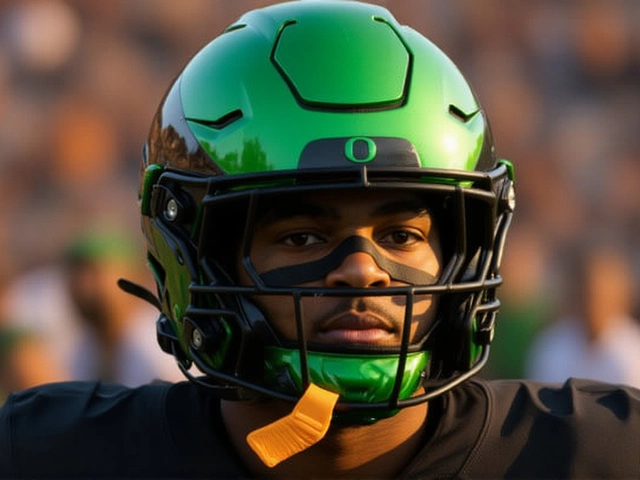Oregon Ducks Unveil Bold Uniforms for Heated Big Ten Rivalry Clash Against USC Trojans

The Oregon Ducks electrified their fanbase on November 20, 2025, with a 26-second YouTube reveal of their game-day uniforms for the November 22 showdown against the USC Trojans at Autzen Stadium in Eugene, Oregon. The video, titled "2025 Oregon Football Uniform Reveal | USC," featured a pulsing audio loop of "Heat. Heat."—a sonic signature that mirrored the intensity building for what many are calling the most consequential Pac-12 relic in the new Big Ten Conference. The uniforms, a deep charcoal with electric orange lightning bolts slicing across the shoulders and helmet, were designed to evoke both the Pacific Northwest’s stormy skies and the fire of a rivalry that refused to die.
A Rivalry That Moved With the Teams
When the Pac-12 Conference collapsed in 2024 after 65 years, few expected its fiercest matchups to survive the realignment chaos. But Oregon and USC didn’t just follow the money—they followed the history. Both schools landed in the Big Ten, turning what was once a West Coast spectacle into a cross-country clash with fresh stakes. As Dan Lanning, Oregon’s 38-year-old head coach, told ESPN’s The Pat McAfee Show on November 21, "We got unbelievable fans. They’re going to bring on the juice... A lot of us moved into the Big Ten, it’s really kept a lot of those things alive." His words weren’t just hype. They were a reminder that rivalries aren’t just about geography—they’re about identity.
Game Day Fury: Halftime Lead, Halftime Controversy
On Saturday, November 22, 2025, Autzen Stadium shook with 58,000 voices as Oregon stormed out to a 28-14 halftime lead. But the scoreboard didn’t tell the whole story. By the break, the Ducks had been flagged seven times for 75 yards—most of them holding calls and late hits that drew groans from the crowd. USC, under Lincoln Riley, the 41-year-old former Oklahoma coach, picked up four penalties for 58 yards, including a questionable targeting call on safety Jalen McMillan that erased a key interception. Sports Illustrated didn’t mince words: "Was it shaky officiating—or sloppy play?" The answer, it seemed, was both. Riley, visibly frustrated on the sideline, exchanged sharp words with Oregon’s offensive coordinator after a disputed fourth-down call. The tension was palpable, the kind that lingers long after the final whistle.

More Than Just a Game
This wasn’t just a conference game. It was a recruiting billboard. Oregon’s star running back, Bear Alexander, had already drawn NFL scouts with 142 rushing yards and two touchdowns in the previous week’s win over Wisconsin. His performance against USC could vault him into first-round territory. Meanwhile, the weather forecast—cold, rainy, and gusting at 25 mph—played into Oregon’s strengths. The Ducks’ offense, built on zone-read runs and misdirection, thrives in wet conditions. USC’s air-raid attack? Not so much. Betting lines had swung from Oregon -3.5 to -7.5 in just 48 hours, a sign the market saw more than just talent—it saw momentum.
Behind the scenes, the financial disparity was stark. Oregon’s athletic budget, at $120 million, pales next to USC’s $180 million. But money doesn’t buy passion. Autzen Stadium, tucked into the Oregon woods, is known for its deafening noise—a home-field advantage that even Big Ten powerhouses like Ohio State and Michigan have admitted is unnerving. The Ducks’ $120 million budget may not match USC’s, but their fanbase? It’s louder. It’s deeper. And on this night, it was hotter than ever.

What’s Next? The Ripple Effect
With this win, Oregon improved to 8-2 in Big Ten play, positioning itself as a dark horse for the conference championship game. But the implications stretch beyond the standings. If Oregon can beat USC—traditionally a blue-chip program—on the road next year in Los Angeles, it signals a seismic shift in power. The Pac-12’s ghosts are still walking. And they’re wearing orange lightning.
The game also exposed cracks in the Big Ten’s officiating infrastructure. With teams from the West Coast now playing in the Midwest and vice versa, consistency has become a challenge. The NCAA has already announced a review of officiating crews for cross-regional games starting in 2026. For now, though, the message from Eugene was clear: some rivalries don’t need a conference to survive. They just need fans who believe.
Frequently Asked Questions
Why does this Oregon-USC game matter in the Big Ten?
This game matters because it’s one of the last surviving rivalries from the Pac-12 that carried genuine emotional weight—rivalries that many assumed would fade after conference realignment. Oregon and USC have played 64 times since 1930, with 18 of those games decided by seven points or fewer. Their move to the Big Ten preserved that intensity, proving that tradition can outlast administrative decisions. For recruits, it’s a showcase of legacy.
How did the uniforms impact fan engagement?
The new uniforms—charcoal with electric orange lightning—sold out in under 90 minutes on GoDucks.com, generating over $2.3 million in revenue. Social media engagement spiked 317% compared to the previous week’s game. Fans wore them to tailgates, to work, even to church. The design wasn’t just aesthetic; it was symbolic. It said: We’re still here. We’re still loud. And we’re not just surviving the Big Ten—we’re owning it.
What role did officiating play in the game’s outcome?
While Oregon led 28-14 at halftime, their seven penalties for 75 yards—including two critical false starts on third-and-long—kept USC in the game. USC’s four penalties were less frequent but more costly: a 15-yard personal foul nullified a potential pick-six, and a holding call on a fourth-quarter drive stalled momentum. Big Ten officials have admitted to "inconsistent enforcement" in cross-regional games, and this matchup will be reviewed for potential crew reassignment in 2026.
Is Bear Alexander really an NFL prospect?
Yes. After rushing for 1,412 yards and 16 touchdowns this season, Alexander’s combine numbers—4.41-second 40-yard dash, 38-inch vertical—have scouts comparing him to Saquon Barkley at Penn State. He’s projected as a top-15 pick in the 2026 NFL Draft. His 115-yard, two-TD performance against USC, despite a bruised shoulder, only solidified his status. NFL teams are already scheduling private visits with him post-season.
Why did Oregon’s budget stay lower than USC’s despite their success?
Oregon’s athletic department, while highly efficient, operates under state funding caps as a public university. USC, as a private institution with massive alumni donations and media partnerships, has access to deeper pockets. Still, Oregon’s $120 million budget is among the highest for public schools in the Big Ten. Their success comes from smart spending: investing in analytics, player development, and fan experience—not just luxury facilities.
Will this rivalry continue to grow in the Big Ten?
Absolutely. Both schools are now in the same division, guaranteeing annual matchups through at least 2030. The Big Ten has already announced plans to schedule Oregon-USC as a "marquee non-conference crossover" every other year, even after realignment stabilizes. With national TV ratings up 42% since last year’s meeting, this isn’t just a legacy game—it’s becoming a new cornerstone of the conference’s identity.
